Abstract
The effect of delayed uridine administration on the in vitro growth inhibitory effects of 5-fluorouracil (5FU) and on the in vivo antitumour activity and toxicity was studied. In vitro growth inhibition of the human intestinal cell lines WiDr and Intestine 407 by 3 microM 5FU could be reversed by 1.0 mM uridine; the effect was more pronounced with WiDr cells. At 0.1 mM uridine an intermediate effect was observed. Inhibition of colony formation in both cell lines could also be reversed by delayed administration of uridine at 0.1 and 1 mM. Incorporation of 5FU into RNA of WiDr cells did not proceed after addition of uridine, in contrast to Intestine 407 cells. In these cells only a partial inhibition was observed. In vivo we studied the effect of uridine on two colon carcinoma tumour lines, the 5FU sensitive Colon 38 and the relatively resistant Colon 26. 5FU was administered i.p. in a weekly schedule. With Colon 26 delayed administration of uridine (3500 mg kg-1) at 2 and 20 h after 5FU enabled us to increase the 5FU dose from 100 to 250 300mg kg-1. The combination of high-dose 5FU and uridine resulted both in a superior antitumour effect and an increase in life span. In the 5FU sensitive Colon 38 we determined whether the sensitivity to 5FU was affected by uridine. Mice were treated at the non-lethal dose of 100 mg kg-1 which inhibited tumour growth almost completely. Delayed administration of uridine did not significantly affect the antitumour effect. In non-tumour bearing mice we studied the time course of the reversal of the haematological toxicity of 5FU. The effective dose of 100 mg kg-1 induced a significant decrease in leukocytes; in combination with delayed uridine the leukopenia was less severe and recovered more rapidly. 5FU also induced a decrease in haematocrit, which could be prevented by delayed administration of uridine. In conclusion, in cell culture the reversal of 5FU cytotoxicity could be achieved at a low concentration of 0.1 mM uridine, the extent of the reversal might be related to the 5FU incorporation into RNA. In vivo the relatively resistant tumour Colon 26 could be treated with a higher dose of 5FU in the presence of uridine. The sensitivity to 5FU of the sensitive Colon 38 was not affected by delayed administration of uridine, while the haematological toxicity of 5FU was less. So, delayed administration of uridine after 5FU resulted in an improved therapeutic effect in both a relatively resistant and sensitive tumour.
Full text
PDF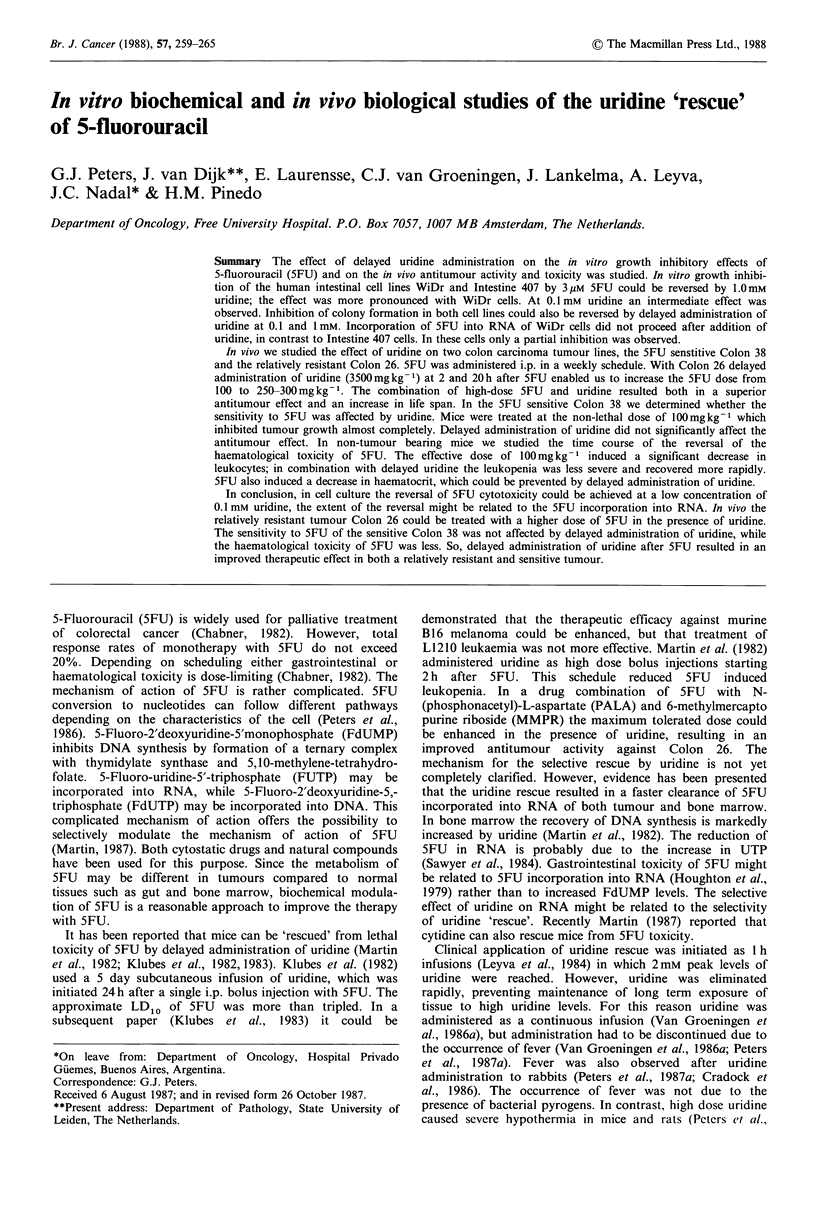
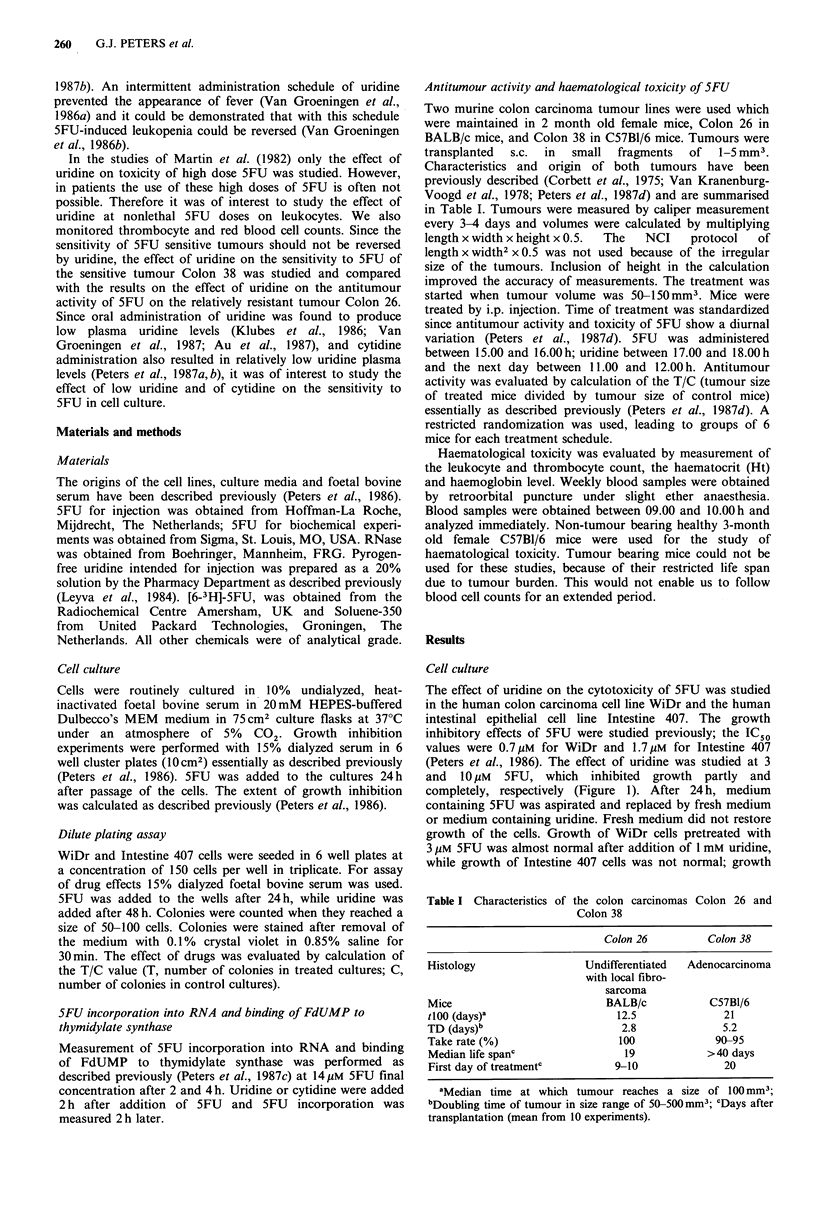
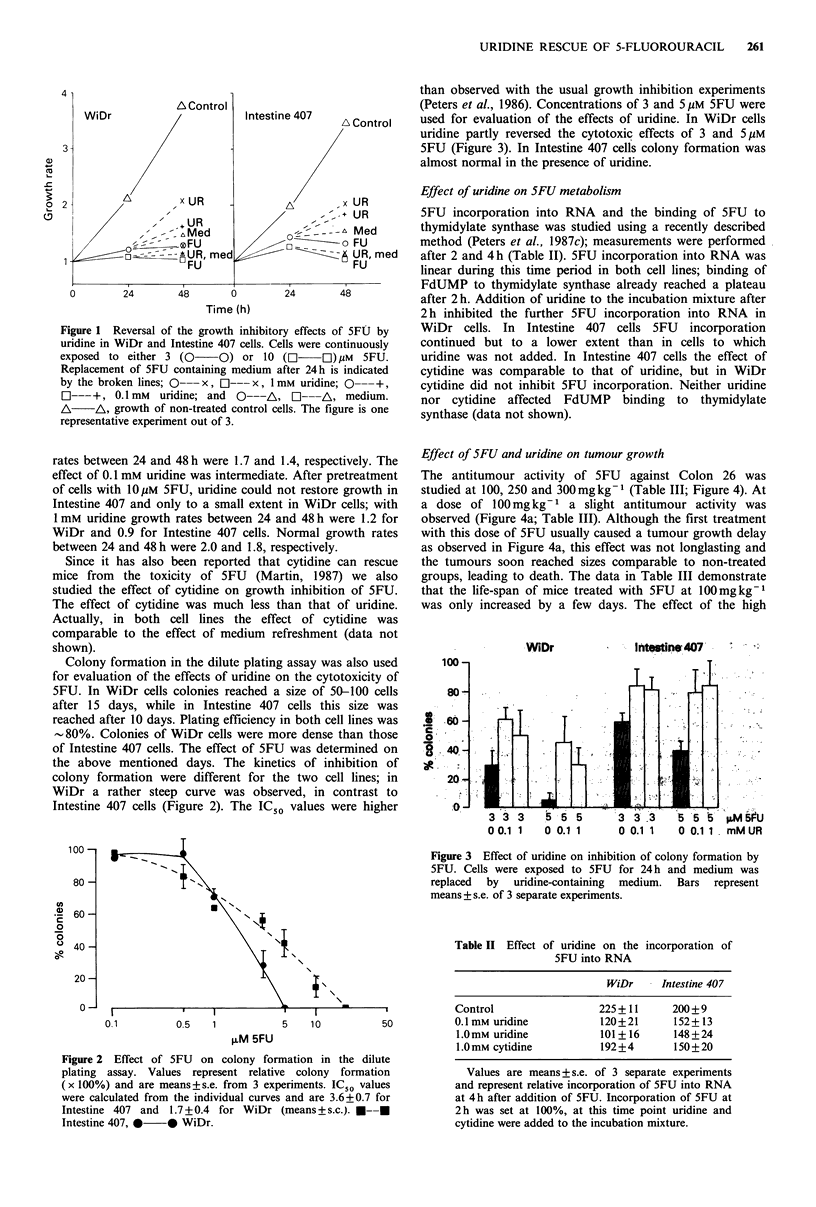
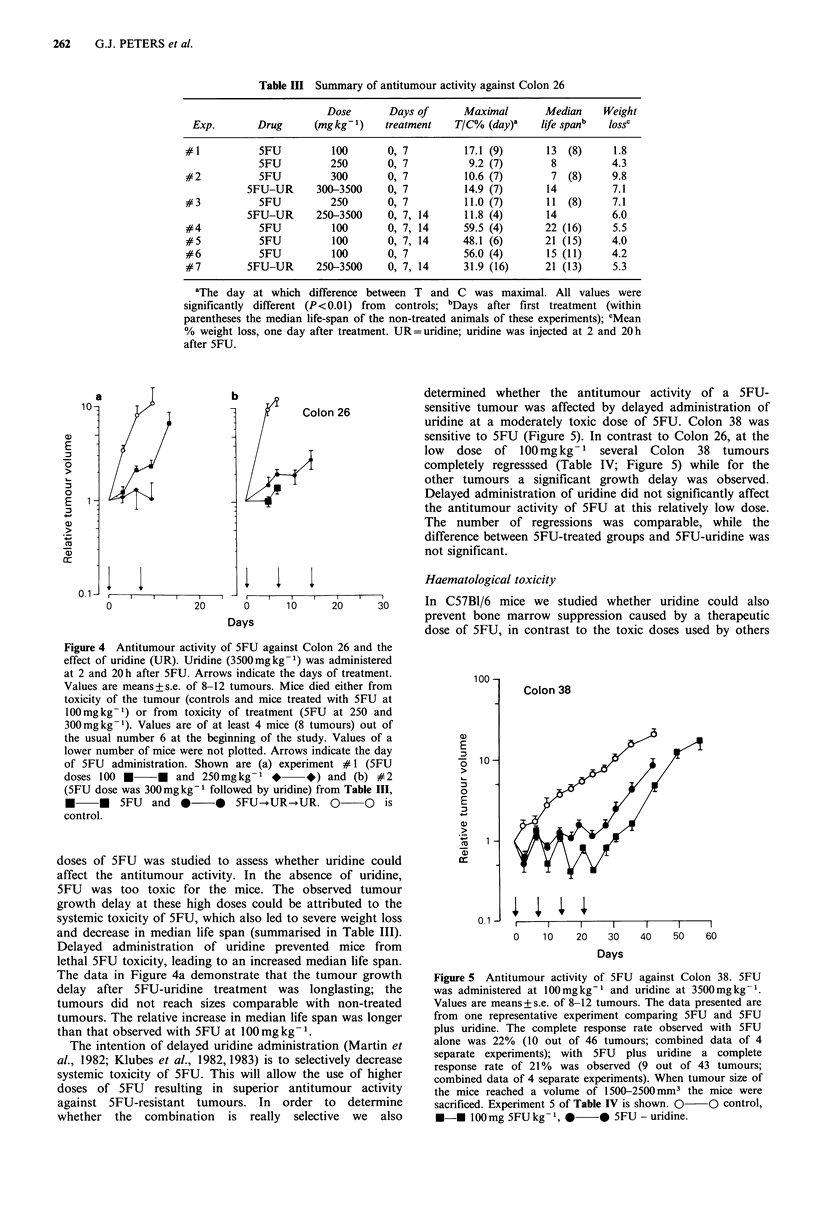
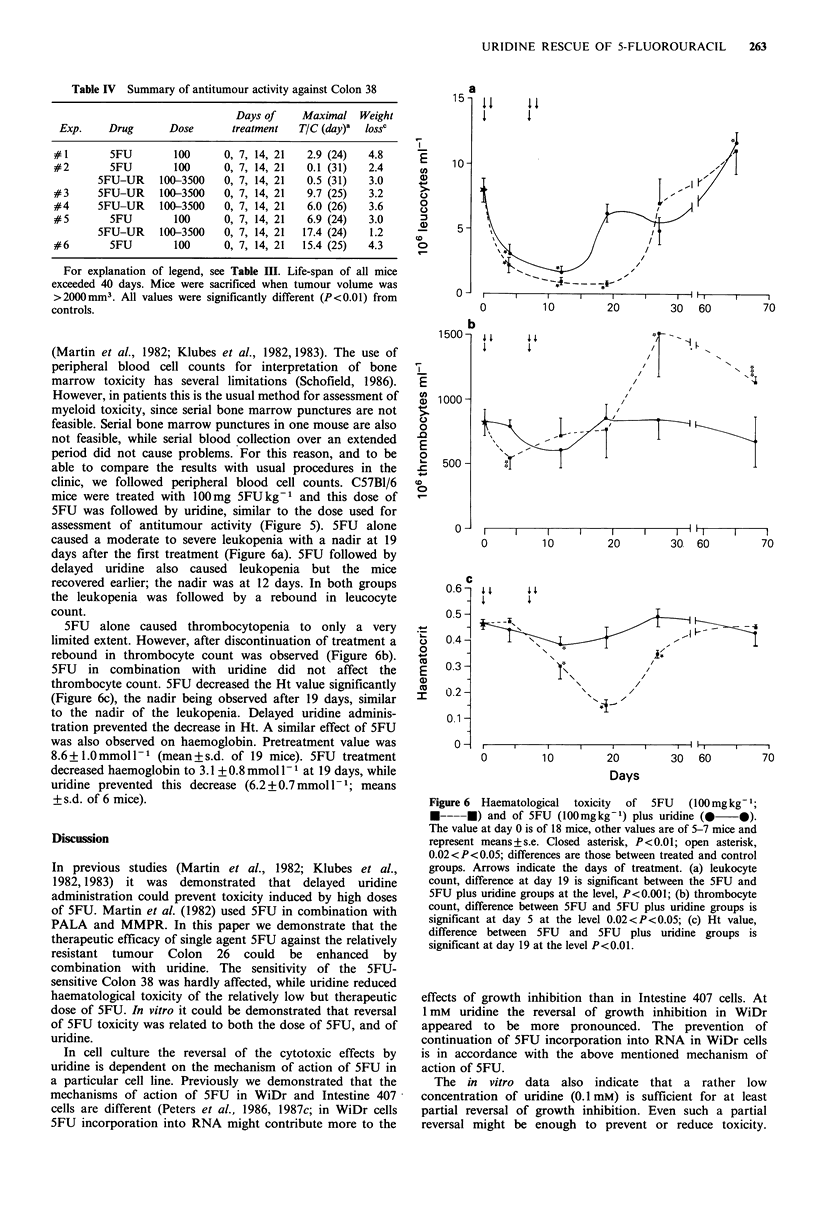
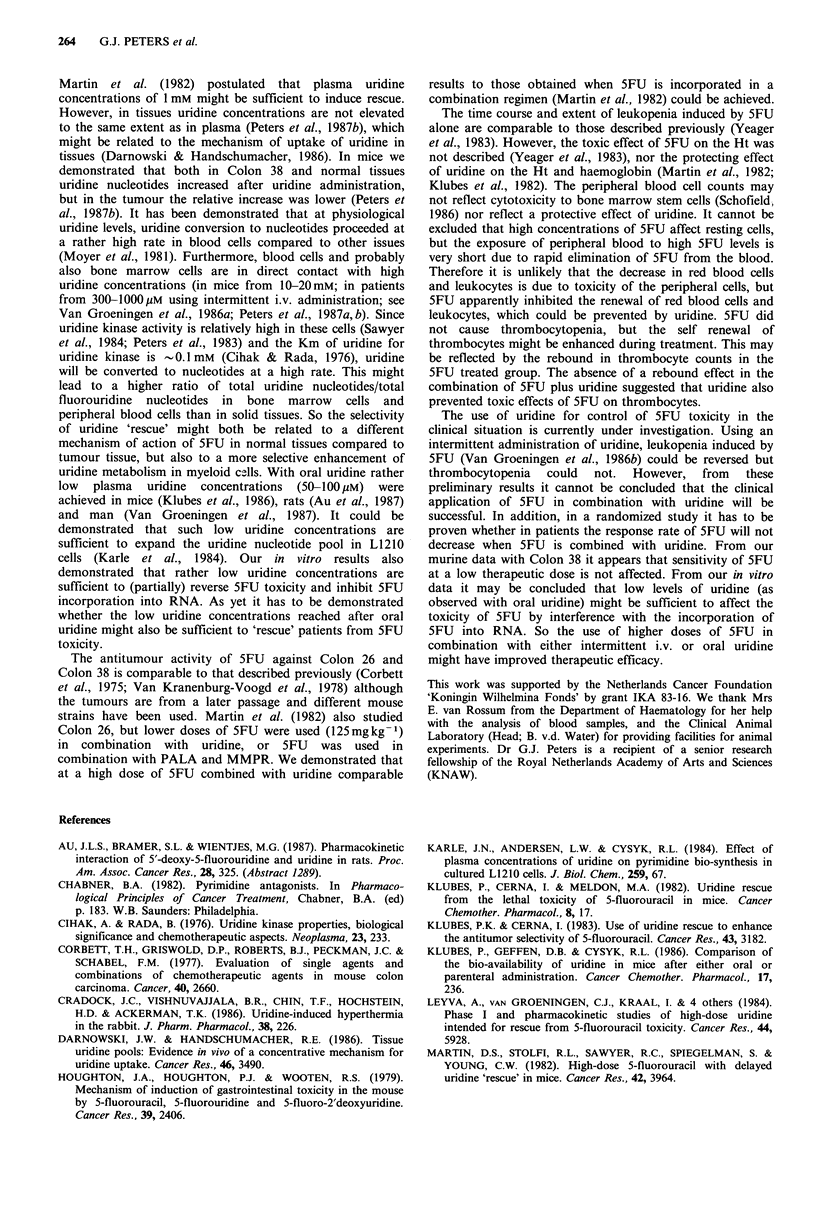
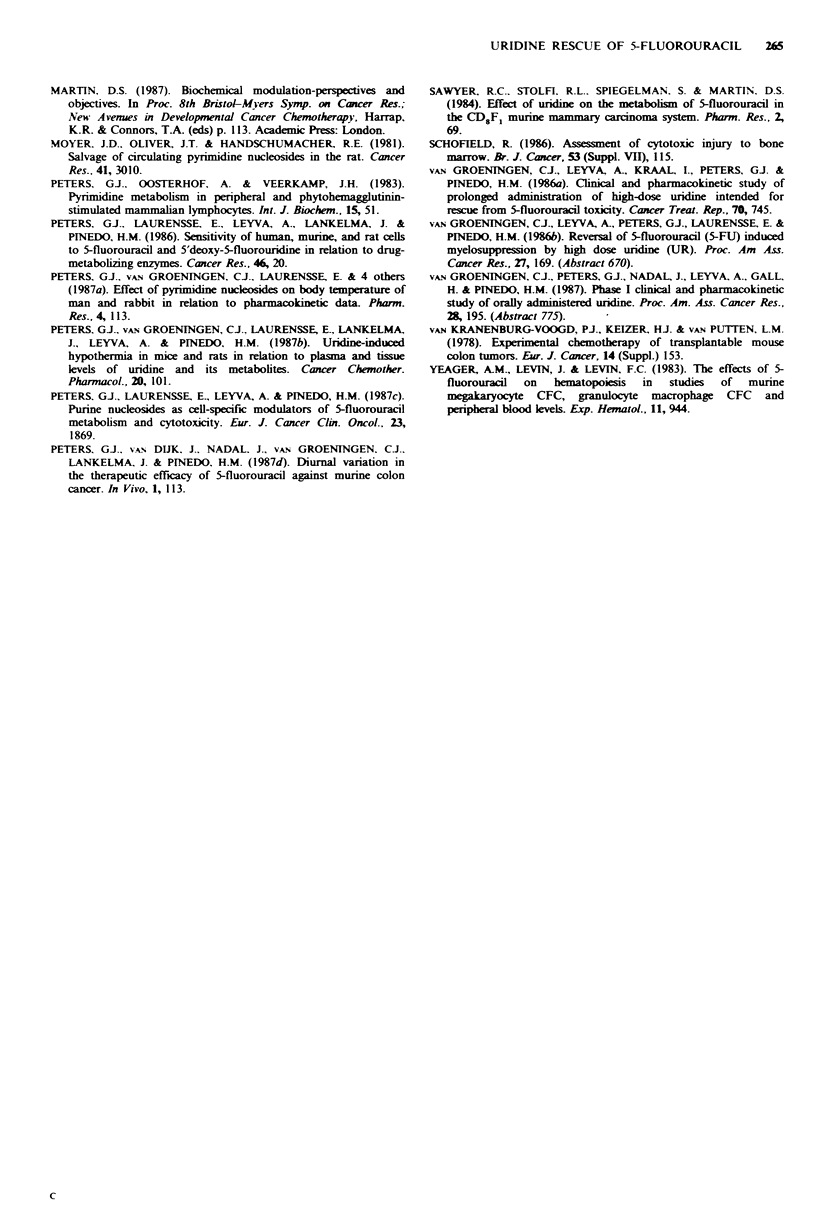
Selected References
These references are in PubMed. This may not be the complete list of references from this article.
- Cihák A., Rada B. Uridine kinase: properties, biological significance and chemotherapeutic aspects (a review). Neoplasma. 1976;23(3):233–257. [PubMed] [Google Scholar]
- Corbett T. H., Griswold D. P., Jr, Roberts B. J., Peckham J. C., Schabel F. M., Jr Evaluation of single agents and combinations of chemotherapeutic agents in mouse colon carcinomas. Cancer. 1977 Nov;40(5 Suppl):2660–2680. doi: 10.1002/1097-0142(197711)40:5+<2660::aid-cncr2820400940>3.0.co;2-m. [DOI] [PubMed] [Google Scholar]
- Cradock J. C., Vishnuvajjala B. R., Chin T. F., Hochstein H. D., Ackerman S. K. Uridine-induced hyperthermia in the rabbit. J Pharm Pharmacol. 1986 Mar;38(3):226–229. doi: 10.1111/j.2042-7158.1986.tb04552.x. [DOI] [PubMed] [Google Scholar]
- Darnowski J. W., Handschumacher R. E. Tissue uridine pools: evidence in vivo of a concentrative mechanism for uridine uptake. Cancer Res. 1986 Jul;46(7):3490–3494. [PubMed] [Google Scholar]
- Houghton J. A., Houghton P. J., Wooten R. S. Mechanism of induction of gastrointestinal toxicity in the mouse by 5-fluorouracil, 5-fluorouridine, and 5-fluoro-2'-deoxyuridine. Cancer Res. 1979 Jul;39(7 Pt 1):2406–2413. [PubMed] [Google Scholar]
- Karle J. M., Anderson L. W., Cysyk R. L. Effect of plasma concentrations of uridine on pyrimidine biosynthesis in cultured L1210 cells. J Biol Chem. 1984 Jan 10;259(1):67–72. [PubMed] [Google Scholar]
- Klubes P., Cerna I., Meldon M. A. Uridine rescue from the lethal toxicity of 5-fluorouracil in mice. Cancer Chemother Pharmacol. 1982;8(1):17–21. doi: 10.1007/BF00292865. [DOI] [PubMed] [Google Scholar]
- Klubes P., Cerna I. Use of uridine rescue to enhance the antitumor selectivity of 5-fluorouracil. Cancer Res. 1983 Jul;43(7):3182–3186. [PubMed] [Google Scholar]
- Klubes P., Geffen D. B., Cysyk R. L. Comparison of the bioavailability of uridine in mice after either oral or parenteral administration. Cancer Chemother Pharmacol. 1986;17(3):236–240. doi: 10.1007/BF00256691. [DOI] [PubMed] [Google Scholar]
- Leyva A., van Groeningen C. J., Kraal I., Gall H., Peters G. J., Lankelma J., Pinedo H. M. Phase I and pharmacokinetic studies of high-dose uridine intended for rescue from 5-fluorouracil toxicity. Cancer Res. 1984 Dec;44(12 Pt 1):5928–5933. [PubMed] [Google Scholar]
- Martin D. S., Stolfi R. L., Sawyer R. C., Spiegelman S., Young C. W. High-dose 5-fluorouracil with delayed uridine "rescue" in mice. Cancer Res. 1982 Oct;42(10):3964–3970. [PubMed] [Google Scholar]
- Moyer J. D., Oliver J. T., Handschumacher R. E. Salvage of circulating pyrimidine nucleosides in the rat. Cancer Res. 1981 Aug;41(8):3010–3017. [PubMed] [Google Scholar]
- Peters G. J., Laurensse E., Leyva A., Lankelma J., Pinedo H. M. Sensitivity of human, murine, and rat cells to 5-fluorouracil and 5'-deoxy-5-fluorouridine in relation to drug-metabolizing enzymes. Cancer Res. 1986 Jan;46(1):20–28. [PubMed] [Google Scholar]
- Peters G. J., Laurensse E., Leyva A., Pinedo H. M. Purine nucleosides as cell-specific modulators of 5-fluorouracil metabolism and cytotoxicity. Eur J Cancer Clin Oncol. 1987 Dec;23(12):1869–1881. doi: 10.1016/0277-5379(87)90053-8. [DOI] [PubMed] [Google Scholar]
- Peters G. J., Van Dijk J., Nadal J. C., Van Groeningen C. J., Lankelma J., Pinedo H. M. Diurnal variation in the therapeutic efficacy of 5-fluorouracil against murine colon cancer. In Vivo. 1987 Mar-Apr;1(2):113–117. [PubMed] [Google Scholar]
- Peters G. J., van Groeningen C. J., Laurensse E. J., Lankelma J., Leyva A., Pinedo H. M. Uridine-induced hypothermia in mice and rats in relation to plasma and tissue levels of uridine and its metabolites. Cancer Chemother Pharmacol. 1987;20(2):101–108. doi: 10.1007/BF00253962. [DOI] [PubMed] [Google Scholar]
- Peters G. J., van Groeningen C. J., Laurensse E., Kraal I., Leyva A., Lankelma J., Pinedo H. M. Effect of pyrimidine nucleosides on body temperatures of man and rabbit in relation to pharmacokinetic data. Pharm Res. 1987 Apr;4(2):113–119. doi: 10.1023/a:1016410817898. [DOI] [PubMed] [Google Scholar]
- Schofield R. Assessment of cytotoxic injury to bone marrow. Br J Cancer Suppl. 1986;7:115–125. [PMC free article] [PubMed] [Google Scholar]
- Yeager A. M., Levin J., Levin F. C. The effects of 5-fluorouracil on hematopoiesis: studies of murine megakaryocyte-CFC, granulocyte-macrophage-CFC, and peripheral blood cell levels. Exp Hematol. 1983 Nov;11(10):944–952. [PubMed] [Google Scholar]
- van Groeningen C. J., Leyva A., Kraal I., Peters G. J., Pinedo H. M. Clinical and pharmacokinetic studies of prolonged administration of high-dose uridine intended for rescue from 5-FU toxicity. Cancer Treat Rep. 1986 Jun;70(6):745–750. [PubMed] [Google Scholar]


